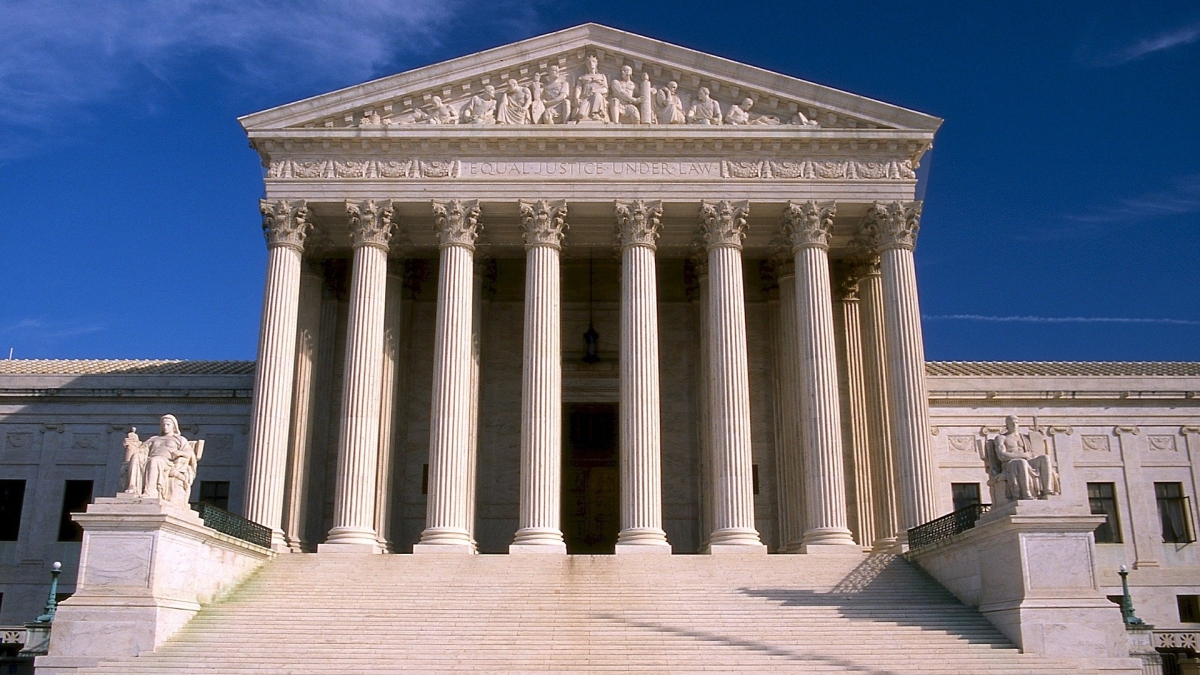SCOTUS hearings: What Judge Barrett’s addition to Supreme Court could mean

Judge Amy Coney Barrett’s confirmation hearings came to a close this week, and the public is getting an opportunity to hear her stance on multiple key issues.
The conservative judge, if confirmed, would sway the court to the right and could have a potential impact in the areas of health care, abortion rights and Second Amendment rights, to name a few.
What does it all mean?
To explain the impact the confirmation could have on existing public health, health care and reproductive laws, we spoke to ASU Sandra Day O’Connor College of Law professors Kaiponanea Matsumura, a legal expert in gay and reproductive rights, and James Hodge, a national public health law and policy expert, whose responses include contributions by ASU Law research scholar Jennifer Piatt.
Question: The Affordable Care Act has been a topic of discussion. What could happen to the act if Barrett is confirmed?
Hodge: There are manifold political concerns that Judge Barrett’s ascension to the Supreme Court could lead to the nullification of the entire ACA. However, this is highly unlikely. The sole basis for the court’s determination that the entire ACA is void rests on a speculative argument that the court would see the entire act as inseverable from its questionable individual mandate provision.
When the Tax Cuts and Jobs Act of 2017 zeroed out the penalty for the individual mandate, the argument surfaced that the ACA’s original mandate provision is unconstitutional because it no longer results in direct revenue collection. Collecting revenue, noted Chief Justice Roberts in NFIB v. Sebelius, is a necessity to Congress’ use of tax powers. The claim that a subsequent zeroing out of the tax penalty via Congress invalidates the individual mandate provision is shaky on its own. Yet, even if the mandate is declared unconstitutional, the notion that it is inseverable from the massive array of other provisions of the ACA is far-fetched. Even the lower federal court of appeals could not agree the ACA in its entirety was inseverable. It chastised the federal district in Texas for a hasty conclusion to this effect.
Plain and simple, for the U.S. Supreme Court to declare the entire ACA as unconstitutional based on a single, potentially unconstitutional provision would represent an overextension of the court’s authority under principles of separation of powers. Multiple, conservative-minded justices on the court have disdained such an approach recently in prior decisions.
Q: Has Barrett offered definitive guidance on her views of Second Amendment rights to gun possession?
Hodge: According to the gun violence archive, 33,703 Americans have died so far in 2020 as victims of gun violence. Rates of violence are increasing during the COVID-19 pandemic. Public health legal interventions are pivotal to curbing these alarming trends but must be constructed within Supreme Court jurisprudence on the scope of Second Amendment rights to gun possession.
In District of Columbia v. Heller, the late Justice Antonin Scalia, a mentor of Judge Barrett, led the court’s decision preventing governments from issuing broad handgun bans or requirements that guns be kept unloaded and disassembled at home. During her Supreme Court confirmation hearings, Judge Barrett declined to provide detailed information on her views of gun control despite direct questioning. In her dissent in the 7th Circuit Court of Appeals case, Kanter v. Barr, however, Judge Barrett opined that states cannot restrict all felons from possessing guns, suggesting only dangerous felons can be deprived of their Second Amendment rights. Views like these may expand the court’s interpretation of the breadth of Second Amendment rights to the detriment of public health legal interventions designed to limit morbidity and mortality.
Q: With Barrett being conservative, what changes could we see in the areas of LGBT rights?
Matsumura: LGBT rights are significantly at risk. Remember that Obergefell v. Hodges, the case that legalized same-sex marriage, was decided by a 5-4 vote. Two of the five justices in the majority, Justices Anthony Kennedy and Ruth Bader Ginsburg, are no longer on the court. Just last week, Justices Clarence Thomas and Samuel Alito criticized the “ruinous consequences” of Obergefell for religious liberty. Chief Justice John Roberts has shown a reluctance to overrule precedent, but that still leaves five justices who likely disfavor a constitutional right to marry for same-sex couples.
Earlier this year, the Supreme Court decided, by a vote of 6-3, that Title VII, which prohibits employment discrimination on the basis of sex, also prohibits discrimination on the basis of sexual orientation and gender identity. This was an important victory for the LGBT community. Given the margin of the decision, the outcome is safe for now, as only Justice Ginsburg’s vote would switch. But even as he delivered a win for LGBT individuals, Justice Gorsuch noted that Title VII’s anti-discrimination protections might be trumped by religious liberties in certain situations, either because of the Free Exercise Clause of the First Amendment, or the Religious Freedom Restoration Act, which Justice Gorsuch described as “a kind of super statute.”
The most imminent challenge to the LGBT community’s recently won rights is likely to come from religious carve-outs; for instance, exemptions for business owners who do not want to offer their services to gay couples. Judge Barrett’s confirmation would virtually guarantee that religious liberty claims would prevail over LGBT rights claims when the two come into conflict.
Q: How might a more conservative court’s view of reproductive rights, including access to abortion, impact women’s health access and choices?
Hodge: Among other critical reproductive rights, the fundamental right to an abortion has been constitutionally enshrined since the Court decided Roe v. Wade in 1973. The late Justice Ruth Bader Ginsburg was a staunch supporter of women’s reproductive rights, notably including access to abortions.
Some speculate that the federally recognized right to abortion may be overturned if Judge Barrett is appointed to the court. Yet, even if the right remains, approval by the court of governmental limitations on abortions may greatly curb women’s access and reproductive freedom.
The Center for Reproductive Rights has identified at least 24 states classed already as “hostile” towards abortion rights. Without strong constitutional protections, access to abortions in these and other jurisdictions could become severely restricted, inhibiting access to care and directly impacting rates of maternal mortality/morbidity.
Matsumura: The real question is whether the court will continue to chip away at what constitutes an “undue burden” on that right under the current framework established by Planned Parenthood v. Casey, or whether it will reverse Roe entirely.
To put it another way: Reproductive freedom can suffer a “death by a thousand cuts” even if Roe is not overturned. That seems like Chief Justice Roberts’ preferred approach. Justice Thomas would prefer to overturn Roe. The approach that the conservative majority takes will depend on how President Trump’s appointees want to proceed.
Q: What are the other legal changes we could see that may impact the public’s health?
Hodge: It cannot be forgotten that a substantial change in composition of the members of the U.S. Supreme Court is occurring in the throes of the COVID-19 pandemic, which has raised substantial constitutional claims and issues at the intersection of the role of governments in preventing its spread contrasted with the rights, freedoms and interests of individuals.
The addition of a prospective new, more conservatively minded justice to the court may directly impact the gamut and scope of forthcoming COVID-19 constitutional challenges on topics as wide-ranging as religious freedoms, rights to associate, free expression and privacy rights extending from testing, screening and vaccination protocols or mandates.
Future cases likely to appear before the court may shape the scope of public health legal interventions for decades to come, all of which may be heavily influenced by the prospective Justice Barrett.
Top photo courtesy of Pixabay.com
More Law, journalism and politics

How to watch an election
Every election night, adrenaline pumps through newsrooms across the country as journalists take the pulse of democracy. We gathered three veteran reporters — each of them faculty at the Walter…
Law experts, students gather to celebrate ASU Indian Legal Program
Although she's achieved much in Washington, D.C., Mikaela Bledsoe Downes’ education is bringing her closer to her intended destination — returning home to the Winnebago tribe in Nebraska with her…

ASU Law to honor Africa’s first elected female head of state with 2025 O’Connor Justice Prize
Nobel Peace Prize laureate Ellen Johnson Sirleaf, the first democratically elected female head of state in Africa, has been named the 10th recipient of the O’Connor Justice Prize.The award,…